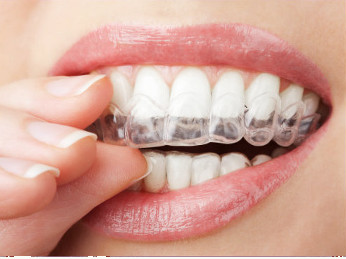Free Whitening
{{ name }}
What is an Orthodontic?
Orthodontic is not just about straighter teeth. It also can improve your facial balance!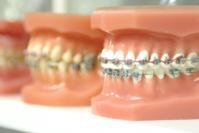
Symptoms that may require orthodontics
Permanent teeth coming out of their normal position; Problems with biting the cheek or roof of the mouth; or Difficulty chewing or difficulty aligning teeth; Facial muscle or jaw pain, or speech difficulties.Several issues below that we can work with you to correct:
Overcrowded teeth occur when there is simply a lack of room within your jaw for all of your teeth to fit normally. When left untreated, overly crowded teeth can cause an increased chance of gum disease as your teeth are harder to clean and can prevent the normal function of teeth.
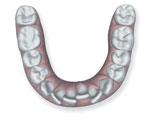 Widely spaced teeth occur when you have extra space within your jaw. This could be due to small sized teeth, abnormal growth of jaw bones, genetics, missing teeth and/or tongue protrusion. When teeth are missing, this can also be caused by the other teeth shifting due to extra space. Spacing issues can cause some perio-dontal diseases including gingivitis and periodontitis, that, left untreated, can lead to tooth loss.
Widely spaced teeth occur when you have extra space within your jaw. This could be due to small sized teeth, abnormal growth of jaw bones, genetics, missing teeth and/or tongue protrusion. When teeth are missing, this can also be caused by the other teeth shifting due to extra space. Spacing issues can cause some perio-dontal diseases including gingivitis and periodontitis, that, left untreated, can lead to tooth loss.
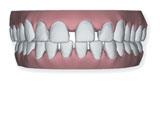 Crossbites occur when the upper and lower jaws are both misaligned. It usually causes one or more upper teeth to bite on the inside of the lower teeth, and can happen on both the front and/or the sides of the mouth. This issue can cause wear of the teeth, gum disease and bone loss.
Crossbites occur when the upper and lower jaws are both misaligned. It usually causes one or more upper teeth to bite on the inside of the lower teeth, and can happen on both the front and/or the sides of the mouth. This issue can cause wear of the teeth, gum disease and bone loss.
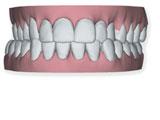
 Widely spaced teeth occur when you have extra space within your jaw. This could be due to small sized teeth, abnormal growth of jaw bones, genetics, missing teeth and/or tongue protrusion. When teeth are missing, this can also be caused by the other teeth shifting due to extra space. Spacing issues can cause some perio-dontal diseases including gingivitis and periodontitis, that, left untreated, can lead to tooth loss.
Widely spaced teeth occur when you have extra space within your jaw. This could be due to small sized teeth, abnormal growth of jaw bones, genetics, missing teeth and/or tongue protrusion. When teeth are missing, this can also be caused by the other teeth shifting due to extra space. Spacing issues can cause some perio-dontal diseases including gingivitis and periodontitis, that, left untreated, can lead to tooth loss.
 Crossbites occur when the upper and lower jaws are both misaligned. It usually causes one or more upper teeth to bite on the inside of the lower teeth, and can happen on both the front and/or the sides of the mouth. This issue can cause wear of the teeth, gum disease and bone loss.
Crossbites occur when the upper and lower jaws are both misaligned. It usually causes one or more upper teeth to bite on the inside of the lower teeth, and can happen on both the front and/or the sides of the mouth. This issue can cause wear of the teeth, gum disease and bone loss.

Overbitesb> occur when the upper teeth overlap significantly with the lower teeth. It's typically caused by either genetics, bad oral habits, or over development of the bone that supports the teeth. This issue can lead to gum problems or irritation, and/or wear on the lower teeth and can cause painful jaw and joint problems.
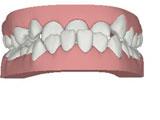 Underbites
occur when the lower teeth protrude past the front teeth, usually caused by undergrowth of the upper jaw, overgrowth of the lower jaw, or both. It can also be caused by missing upper teeth. This issue can prevent the normal function of front teeth or molars which can lead to tooth wear. It can also cause painful jaw and joint problems.
Underbites
occur when the lower teeth protrude past the front teeth, usually caused by undergrowth of the upper jaw, overgrowth of the lower jaw, or both. It can also be caused by missing upper teeth. This issue can prevent the normal function of front teeth or molars which can lead to tooth wear. It can also cause painful jaw and joint problems.
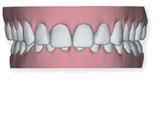
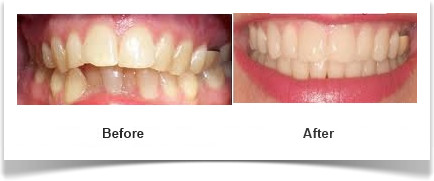
 Underbites
occur when the lower teeth protrude past the front teeth, usually caused by undergrowth of the upper jaw, overgrowth of the lower jaw, or both. It can also be caused by missing upper teeth. This issue can prevent the normal function of front teeth or molars which can lead to tooth wear. It can also cause painful jaw and joint problems.
Underbites
occur when the lower teeth protrude past the front teeth, usually caused by undergrowth of the upper jaw, overgrowth of the lower jaw, or both. It can also be caused by missing upper teeth. This issue can prevent the normal function of front teeth or molars which can lead to tooth wear. It can also cause painful jaw and joint problems.


What is Invisalign?
By using a series of clear, removable aligners, Invisalign straightens your teeth with results you’ll notice sooner than you think. The course of treatment involves changing aligners approximately every two weeks, moving your teeth into straighter position step by step, until you have a more beautiful smile. And unlike braces, these clear aligners can be removed while you eat and brush your teeth as usual.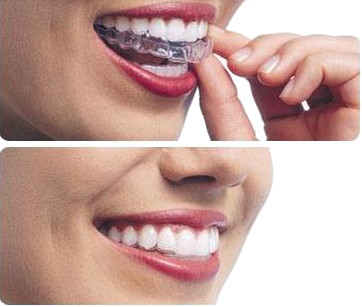
Fixed Retainer
These consist of a thin stainless steel wire, which is permanently bonded behind the front teeth. We usually fit your fixed retainers when your braces are removed.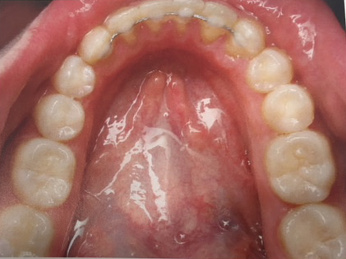
Removable Retainer
The removable retainers will be custom-made to fit you perfectly.